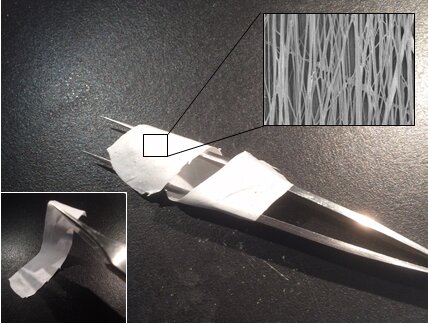Researchers at CÚRAM, the SFI Research Centre for Medical Devices based at NUI Galway, have shown how the simple act of walking can power an implantable stimulator device to speed up treatment of musculoskeletal diseases.
The results of have been published in the prestigious journal Advanced Materials.
The research establishes the engineering foundations for a new range of stimulator devices that enable control of musculoskeletal tissue regeneration to treat tendon damage and disease and sports injuries, without the use of drugs or external stimulation.
Lead researcher on the study, CÚRAM Investigator Dr. Manus Biggs, said, “One of the most exciting parts of our study is that these implantable devices may be tailored to individual patients or disorders and may show promise in accelerating the repair of sport-related tendon injuries, particularly in athletes.”
The study investigated whether electrical therapy, coupled with exercise, would show promise in treating tendon disease or ruptures. It showed that tendon cell function and repair can be controlled through electrical stimulation from an implantable device which is powered by body movement.
Dr. Marc Fernandez, who carried out the principal research of the study at CÚRAM, said, “Successful treatment of tendon damage and disease represents a critical medical challenge.
“Our discovery shows that an electrical charge is produced in the treatment target area—the damaged or injured tendon—when the implanted device is stretched during walking. The potential gamechanger here is like a power switch in a cell—the electrical stimulus turns on tendon-specific regenerative processes in the damaged tendon.”
The stimulator device uses a fabric like mesh—known as a piezoelectric material—that produces electricity when stretched or put under mechanical pressure. It is made using a scaffold of nano-fibers that are one-thousandth of the thickness of a human hair.
Dr. Fernandez added, “We presented an implantable, electrically active device capable of controlling tendon regeneration and healing. Importantly, our research improved the therapeutic performance of the device by enhancing its structure, piezoelectric characteristics, and biological compatibility.
“We also evaluated the individual influence of mechanical, structural, and electrical cues on tendon cell function and were able to show that bioelectric cues contribute significantly in promoting tendon repair.”
Dr. Biggs added, “This unique strategy of combining a device which is powered through body-movement and which can induce accelerated tendon healing is expected to significantly impact the field of regenerative devices, specifically in the area of sports or trauma associated injuries.
“These devices are cost-effective, relatively easy to implant and may pave the way for a whole new class of regenerative electrical therapies.”
Stem cells may significantly improve tendon healing by regulating inflammation
More information:
Marc A. Fernandez‐Yague et al, A Self‐Powered Piezo‐Bioelectric Device Regulates Tendon Repair‐Associated Signaling Pathways through Modulation of Mechanosensitive Ion Channels, Advanced Materials (2021). DOI: 10.1002/adma.202008788
Provided by
National University of Ireland, Galway
Citation:
Researchers discover way to switch on and speed up tendon healing (2021, August 31)
retrieved 31 August 2021
from https://medicalxpress.com/news/2021-08-tendon.html
This document is subject to copyright. Apart from any fair dealing for the purpose of private study or research, no
part may be reproduced without the written permission. The content is provided for information purposes only.



